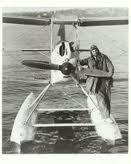
NavList:
A Community Devoted to the Preservation and Practice of Celestial Navigation and Other Methods of Traditional Wayfinding
Re: Hughes explanation of Chichester's navigation.
From: Gary LaPook
Date: 2015 Jan 14, 16:31 -0800
From: David Pike <NoReply_DavidPike@fer3.com>
To: garylapook@pacbell.net
Sent: Wednesday, January 14, 2015 2:21 PM
Subject: [NavList] Re: Hughes explanation of Chichester's navigation.
Attached File:

(Elijah-Floats-effect-on-late.jpg: Open and save)
From: Gary LaPook
Date: 2015 Jan 14, 16:31 -0800
The floats were originally on "the Moth sent up to bomb the Mau rebels at Samoa," see attached.
gl
From: David Pike <NoReply_DavidPike@fer3.com>
To: garylapook@pacbell.net
Sent: Wednesday, January 14, 2015 2:21 PM
Subject: [NavList] Re: Hughes explanation of Chichester's navigation.
Re: Hughes explanation of Chichester's navigation.
From: Brian Walton
Date: 2015 Jan 14, 06:32 -0800
From: Brian Walton
Date: 2015 Jan 14, 06:32 -0800
Mr LaPook,
I have been flying a biplane solo recently, using various sextants and
a facsimile Bygrave, to investigate the problems Chichester faced. My experience so far reveals a different problem from the expected trouble with plotting, sight taking, and computing.
Would you be prepared to continue this discussion individually?
Regards,
Brian Walton
Brian
Don’t forget Chichester was flying a land Moth with borrowed floats attached. He doesn’t say which aircraft they were originally used on.
If you look at the photograph opposite page 68 of the 1966 edition of ‘Alone over the Tasman Sea’, you’ll see the air drag on them must have been quite large causing a nose down pitching moment in excess of that of a pair of wheels. Also, before dihedral will cause an aircraft to pick a dropped wing up, sideslip has to develop. However, the effect of that sideslip on the floats is probably more laterally destabilising than a pair of wheels, so it’s little wonder that ‘Elijah had a penchant for spiral dives. In addition, one float was leaking and the support struts might not have been perfectly
symmetrical. All this would have added to the difficulty of trimming the aircraft to fly hands off. If you’ve not seen it, the chart from Norfolk Is to Lord Howe Is in ‘Hughes’ History of Air Navigation’ is considerably easier to read than the one in the 1966 edition of ‘Alone over the Tasman Sea’. Please keep your discussions on the web. I for one found them very interesting. I’m contemplating redrawing the chart at my desk on the back of last year’s wall calendar in the same order Chichester put the lines on it in order to help me understand his ideas. I see from my log book that I flew a Tiger Moth solo a couple of times in 1965, and I have to say I found it exilerating enough without doing anything more complicated than map reading. Dave
Attached File:

(Elijah-Floats-effect-on-late.jpg: Open and save)







